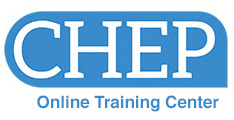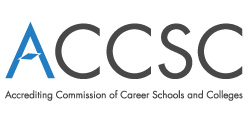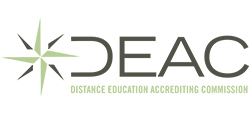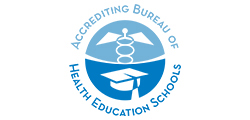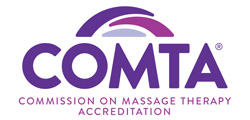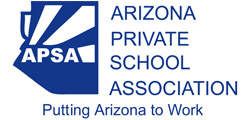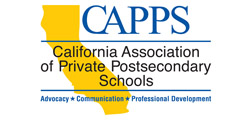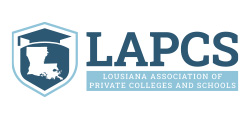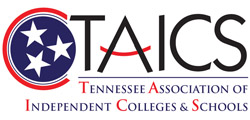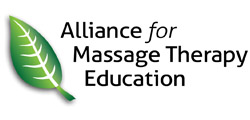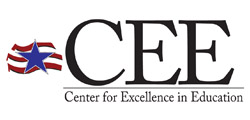Badge Evidence | Completed Courses (4 Hours Each)
CM151Onsite Visits - Be Ready Anytime
Is your campus ready for a full unannounced visit at any time? Onsite visits are becoming more frequent in recent years and unannounced visits even more so. This training is designed to aid campus leaders to be prepared, using best practices and practical tools, to host an onsite visitor at any time, including visits that are unannounced, by any organization such as state agencies, veterans' organizations, regional, national and programmatic accrediting agencies and the Department of Education.
EC140Introduction to Positive Psychology for Educators
Positive psychology is the science of human flourishing and is leveraged to cultivate well-being for students, teachers, and staff in schools around the world. You'll be introduced to the tools of positive psychology to help you and your students thrive in the classroom and in life. This course is designed to help you understand the science of well-being and how to employ it for yourself and in educational settings to support well-being and academic achievement. The modules cover positive psychology's origins, and the research and application of the PERMA model, Character Strengths, and positive education.
ED101Effective Teaching Strategies
This introductory course covers the essential roles of a teacher and the competencies required to be a successful instructor in an educational institution. Proven techniques and strategies for planning and preparation are presented and discussed. In addition, the course offers effective methods for conducting the first class meeting and delivering course content. This course provides a solid foundation for new instructors and serves as an excellent refresher for more experienced instructors.
ED102Student Retention Methods
The instructor is the real key to student retention at any educational institution. Instructors must keep focused on student motivation and retention each and every day of class. Developing strategies for retaining students throughout the entire training sequence is both complex and rewarding. All instructors should have the goal of seeing all of their students successfully complete their class. This course helps you reach that goal by helping you to understand your students and use proven motivation and retention techniques to keep them enrolled and engaged in the learning process.
ED103Student Learning and Assessment
Educators work with students who want to learn specific skills that will lead to fulfilling careers. As educational instructors it is our job to help each student to achieve this goal. Just as you may have a particular style of teaching that you prefer, your students have preferred ways of learning. This course will help you to identify the different learning styles of your students so that you can adjust your instruction to better accommodate them. Good teachers also regularly monitor the effectiveness of their instruction by assessing their students’ learning. This course will examine several aspects of assessment including how to create good tests, how to ask effective questions and how to get your students to actively participate in their learning by asking questions themselves.
ED104Class Management Strategies
This course provides methods and techniques for managing students and class activities. We start by reviewing the steps instructors need to follow as they introduce a class to new students. We then discuss strategies to effectively deal with unfocused and challenging students. The course ends by describing common mistakes made by instructors and ways to avoid them.
ED106Enhancing Student Learning
This course provides methodologies and examples to help instructors increase content retention and application by students in need of support. The course starts by covering the skills needed by instructors to be clear communicators. We then discuss ways instructors can become effective in monitoring students and using student groups as learning tools. The course concludes by covering techniques and strategies to instruct diverse learners, including learners with disabilities.
ED108Learning Theory and Practice
This course covers the different ways individuals learn and apply new knowledge. We start by covering the steps the brain goes through as it processes new information, and how knowledge is stored and retrieved. We then discuss how intelligence is measured and how learners process information through the use of multiple intelligences. Moving from theory to practice, the course shows instructors how to use the learning needs of students to increase knowledge acquisition and retention. The course includes a number of easy to implement strategies to help students retain and use new content.
ED115RSoft Skills for Instructors
This survey course provides an introductory discussion about how good soft skills help instructors to be successful. A distinction is made between hard skills, soft skills, people skills, and workplace behaviors. Selected soft skills are listed for various categories of businesses and industries, including the teaching profession. Two studies are referenced that highlight skills that are frequently cited in the literature. One study was published in 1997, while the other was conducted specifically for this course in 2024. Selected tips are offered for improving one's soft skills. Numerous hyperlinks are included that direct the reader to a variety of online enrichment materials, including a few online instruments that help individuals learn more about their own soft skills.
ED138Competency-Based Instruction
The term "Competency-Based Instruction" (CBI) is emerging as a new and preferred approach to education and the management of education. CBI is currently being evaluated at all levels of education, from K-12 to higher education and beyond. In traditional higher education it is referred to as CBE (Competency-Based Education) as it relates to specific competency-based programs. This course explores the topic in terms of the various characteristics of competency-based teaching and learning and highlights the most commonly agreed-upon benefits for students. The course also addresses the teaching approaches required to support a competency-based learning environment most effectively.
ED139Emotional Intelligence in Learning
Emotional Intelligence (EI) is an increasingly important field of study. The purpose of this course is to explore the relevancy of emotional intelligence in learning; and how understanding the importance of emotional intelligence supports student success. While instructors are more aware now of the various forms of intelligence, emotional intelligence has been undervalued in the past as a vital form of intelligence. Indeed, emotionally intelligent students may provide insight and application of knowledge in new and informative ways which can have positive impact on their learning progression and success.
ED148ChatGPT and Educational Uses
This course will provide an overview of ChatGPT and how it might impact education. With an artificial intelligence (AI) language processing tool, there could be endless possibilities. However, like any other technology, its use in education is to be considered carefully, because learning will be affected. The course begins with an overview of the history of chatbots and artificial intelligence and goes on to discuss how to use ChatGPT, how teachers and students may use it, and the advantages and disadvantages of its use.
ED208Adult Learning Theories
When designing instruction for adult learners, it's important to consider a host of factors. This course describes the characteristics and motivations of adult learners, and the best practices and techniques for teaching them. It discusses the different theories of adult development and adult learning, and their relationships to the classroom experience. In addition, this course examines brain-based teaching strategies, the theory of multiple intelligences, and how the different parts of the brain are affected by new learning.
ED400Coping with Stress and Burnout
Stress is something that is present throughout all workplaces in the world. It is often something that cannot be avoided, but instead, must be properly managed. Burnout on the other hand, is something that is less frequent, but far too prevalent. Burnout can cause even the best worker to slow down in productivity and quality (often dramatically). Throughout this course, we will discuss stress, burnout, and many of the causes that you may notice on even a daily basis. We will discuss how to appropriately handle and mitigate stressors, and how to lessen the risk of burnout occurring.
EL101Designing and Developing Online Courses
This introductory course will provide you with the knowledge and skills to create successful online courses, whether for faculty-supported distance education delivery or as a supplement to classroom instruction. You will learn to design and develop online courses that have structural integrity and navigational simplicity with a focus on student-centered learning and intellectual interaction. The course covers various learning activities that are supported in an e-learning environment and describes the typical components of an online course. We will provide you with the media strategies and course design methodologies that will allow you to develop online courses in an effective and efficient manner.
EL102Online Teaching Techniques
Your degree of success as an online instructor relies heavily on several factors, among which are your level of preparedness before the date on which the course is launched; your ability to make a smooth transition into the roles and responsibilities associated with teaching in an online environment; and the effectiveness and efficiency with which you manage learners, instructional transactions embedded in the course as well as the learning environment. In this course, you will learn how to project your authority and presence into the e-learning environment, build a relationship with each learner, promote and nurture learner participation, provide informative and constructive feedback in a timely manner, minimize attrition, manage communications, manage unacceptable behavior and resolve disagreements.
EL105Online Language: Communicating with Students
This course will provide you with information to help you effectively communicate with students and encourage communication among students in an online environment. You will learn the importance of facilitating instructor-to-student (I2S), student-to-instructor (S2I), and student-to-student (S2S) communication. Technology tools play a vital role in the communication process and several are discussed in this course. In addition, discussion is also provided to help you further understand how to manage and measure communication in an online course and help students communicate effectively.
EL105ROnline Language: Communicating with Students
This course provides information to help you effectively communicate with students and encourage communication among students in an online environment. You will learn the importance of facilitating instructor-to-student (I2S), student-to-instructor (S2I), and student-to-student (S2S) communication. Digital technology tools play a vital role in the modern communication process, and several are discussed in this course. In addition, discussion is provided to help you further understand how to manage and measure communication in an online course and help students communicate effectively.
EL106Evaluating Student Learning in Online Courses
This course will provide you with the knowledge to effectively evaluate student learning in an online environment. Technology tools play a vital role in the evaluation process and several are discussed in this module. Discussion will also be provided to help you further understand how to complete formative and summative assessments, as well as the advantages and disadvantages of objective and subjective assessments. Value-added assessments are also discussed in light of how they can be completed and provide feedback for course revision.
EL108Preparing Students to Become Good Online Learners
This course will provide you with strategies and techniques to help prepare students for the online environment. To do so, you must also assess your strengths and weaknesses as an online instructor. As you help students assess their readiness for online learning, you are also preparing them for the expectations and realities of the online environment. By identifying students' strengths and weaknesses, you can provide guidance to help them achieve the learning outcomes. This course not only notes the necessary technical skills, it also discusses non-technical skills as well as techniques for successful learning and helping students develop their online persona.
EL109Using Rubrics to Enhance Online Learning
This course will inform you about the purpose of rubrics and will provide you with the techniques to develop rubrics as an assessment tool for student performance, processes and products. This course will explore types of rubrics, the role rubrics play in assessment, as well as the use of rubrics in evaluating elements of your online course to ensure your course is truly student-centered.
EL113Active Learning in an Online Environment
This course will provide you with a basic overview of the background and history of the popular instructional method called active learning. This method differs from traditional educational methods such as the lecture model. Active learning has a definite place in education especially in the online learning environments. It is used to support teaching outcomes like critical thinking skills, interpersonal skills and knowledge acquisition that all instructors wish for their students. However, active learning it calls for a change of attitude on the part of students and the instructor in order to be successful. But the advantages far outweigh the disadvantages as it can make students enthusiastic about learning. Learn about this brave new world of teaching and learning for the next generation.
EL114Respecting Copyrights and Leveraging Available Resources
This course provides a basic overview of the background and history of the usage of copyrighted materials in U.S. education. Copyright usage is an often-misunderstood area of education. This course will help build an awareness of the U.S. Copyright Law and its various components. Instructors will be given practical examples on how to correctly use copyrighted materials in their classrooms. In the 21st century, many students do not recognize common concepts such as pirating of music and videos. Instructors are on the frontline in education and can educate newer generations on the ideas of fair use, intellectual property, and piracy issues.
EL115RGaming and Simulation in Online Learning
This course will provide you with strategies and techniques to immerse students in an interactive environment that will incorporate gaming and simulations to introduce, engage, and reinforce online learning. This course will begin with definitions of gaming and simulations as a tool for online learning and will provide guidance to evaluate, implement, and assess the effectiveness of games.
EL117Understanding Personality Traits of Online Instructors and Learners
This course will provide you with an overview of online instructors' and learners' personality traits. Participants will be provided with information about the traits themselves, as well as how to identify such traits, utilize them, and develop lessons to reach all students.
EL141Engaging Online Learners
This course will explore the online learning landscape and how to ensure learner engagement remains high, even when working virtually. The course discusses various aspects of online education, as well as discussing techniques for both social and motivational forms of engagement and how to apply them appropriately in courses.
The goal of this course is to help develop a better understanding of the topic and produce tangible resources to help implement plans, strategies, and ideas at your school. In addition to lecture videos, links to possible resources, and assessments, you will be able to utilize the Journal and Learning Activities. Take advantage of a method that best works for you.
EL142Effective Online Assessments
Assessments are a vital part of the learning process. They allow students and teachers to see how well they are doing and what needs to be improved upon. When offering online assessments, it is sometimes difficult to develop effective methods due to the new digital learning landscape, experience level with online teaching, or with tweaking on-ground assessments to create an effective online form.
In this course, students will identify the impacts and opportunities that online assessments have in the digital learning process, discover the challenges that can present themselves and the strategies to overcome them, and evaluate guidelines for crafting effective assessment opportunities in an online course.
LS101RDo You Manage Or Lead?
This course explores the critical differences between management and leadership. Participants will be introduced to definitions and myths about each area as well as how management and leadership must coexist for an organization to operate effectively. Participants will explore their own management/leadership tendencies through exercises to see leadership and management in action.
LS102How Do You Lead?
Not everyone is suited for, or desires, a leadership position. One of the first steps to being an effective leader is to understand the desire to lead in the first place. Participants will explore their motivation to lead and develop a deeper understanding of their leader style(s).
LS103RYour Leadership Impact
To improve your impact and effectiveness as a leader, you must not only understand the role of a leader, but you must also take into consideration the followers and the situation. This course defines leadership impact and explores the interactional framework for leadership.
LS104RYour Leadership Legacy
The higher education industry provides a wealth of opportunities and challenges for those seeking leadership positions. In this course, participants will gain a deeper understanding of the higher education sector and themselves. The importance of higher education institutions will be explored along with developing a personal leadership legacy.
LS105RYour Leadership Toolkit
Get ready to add a number of skills to your toolkit as you develop as a leader! This course focuses on increased self-awareness in communication styles and learning; developing deeper understanding through empathic listening; and motivating through innovation.
LS106This Way to Leadership
This course provides you with a framework to put your self-discovery and learning into a workable plan to further develop your leadership skills. A step-by-step process is offered to help you create a meaningful Personal Leadership Development Plan (PLDP) complete with the development of SMART Goals and advice from some of today's leaders in the higher education sector.
ML118Coaching Skills
In this course, you will learn how to strengthen your coaching skills by using a four-step process to facilitate the professional growth of the employees you coach.
ML120Feedback Skills
Feedback is an essential component of the communication process. In this course, you will learn when and how to give effective positive or corrective feedback, how to offer feedback upward, and how to receive feedback.
ML121Negotiation Skills
This course provides a practical guide to becoming an effective negotiator. The course includes steps to guide you through the negotiation process assessing your interests as well as those of the other party, developing opportunities that create value, avoiding common barriers to agreement, and implementing strategies to make the negotiation process run smoothly.



